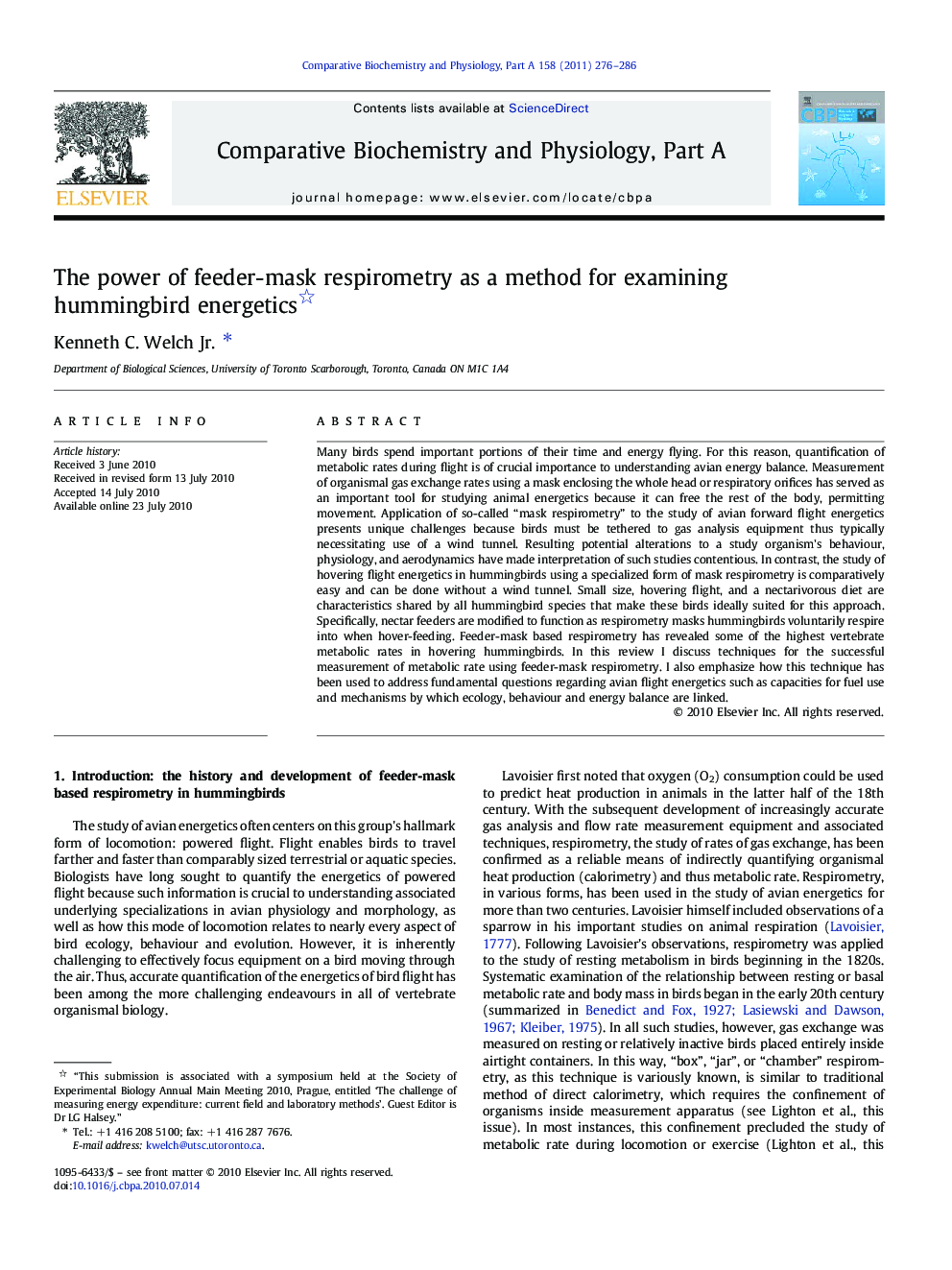| کد مقاله | کد نشریه | سال انتشار | مقاله انگلیسی | نسخه تمام متن |
|---|---|---|---|---|
| 1972804 | 1060294 | 2011 | 11 صفحه PDF | دانلود رایگان |

Many birds spend important portions of their time and energy flying. For this reason, quantification of metabolic rates during flight is of crucial importance to understanding avian energy balance. Measurement of organismal gas exchange rates using a mask enclosing the whole head or respiratory orifices has served as an important tool for studying animal energetics because it can free the rest of the body, permitting movement. Application of so-called “mask respirometry” to the study of avian forward flight energetics presents unique challenges because birds must be tethered to gas analysis equipment thus typically necessitating use of a wind tunnel. Resulting potential alterations to a study organism's behaviour, physiology, and aerodynamics have made interpretation of such studies contentious. In contrast, the study of hovering flight energetics in hummingbirds using a specialized form of mask respirometry is comparatively easy and can be done without a wind tunnel. Small size, hovering flight, and a nectarivorous diet are characteristics shared by all hummingbird species that make these birds ideally suited for this approach. Specifically, nectar feeders are modified to function as respirometry masks hummingbirds voluntarily respire into when hover-feeding. Feeder-mask based respirometry has revealed some of the highest vertebrate metabolic rates in hovering hummingbirds. In this review I discuss techniques for the successful measurement of metabolic rate using feeder-mask respirometry. I also emphasize how this technique has been used to address fundamental questions regarding avian flight energetics such as capacities for fuel use and mechanisms by which ecology, behaviour and energy balance are linked.
Journal: Comparative Biochemistry and Physiology Part A: Molecular & Integrative Physiology - Volume 158, Issue 3, March 2011, Pages 276–286